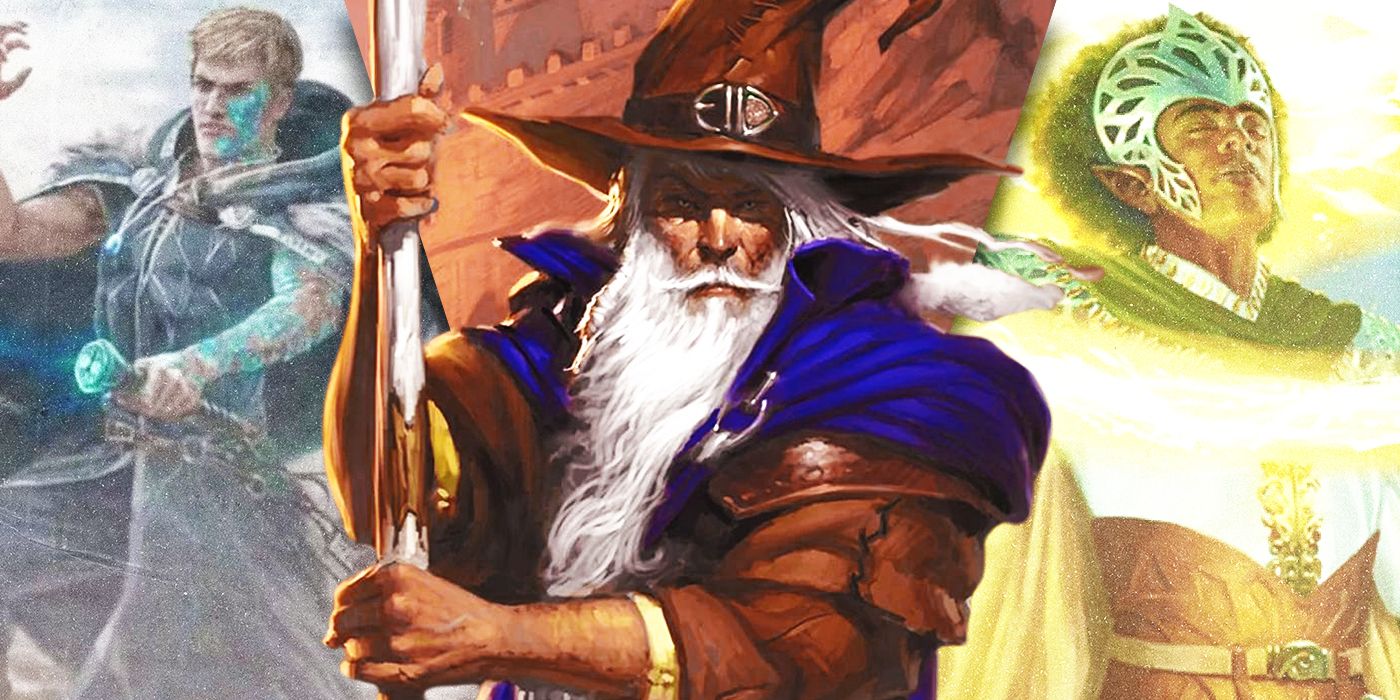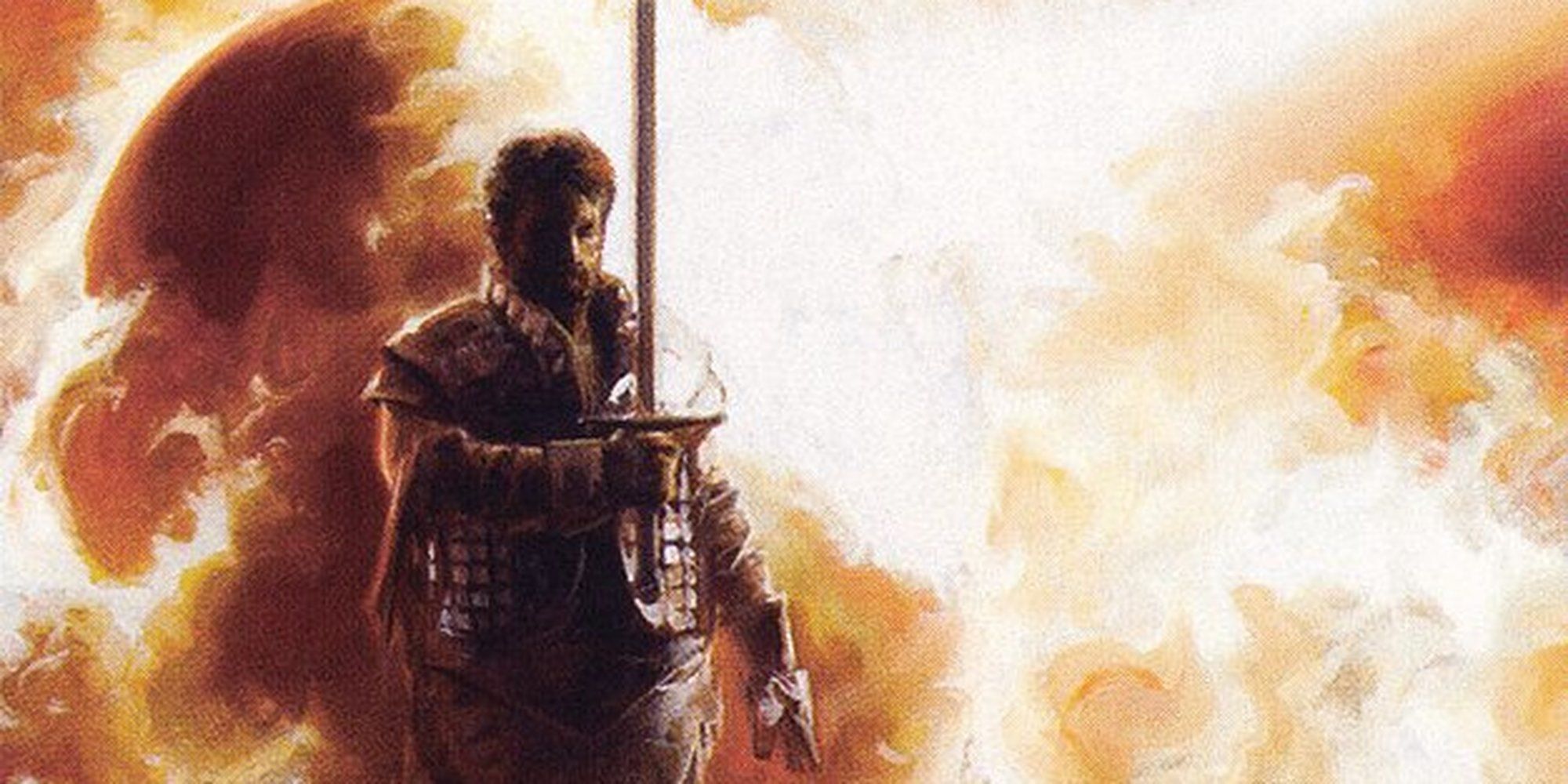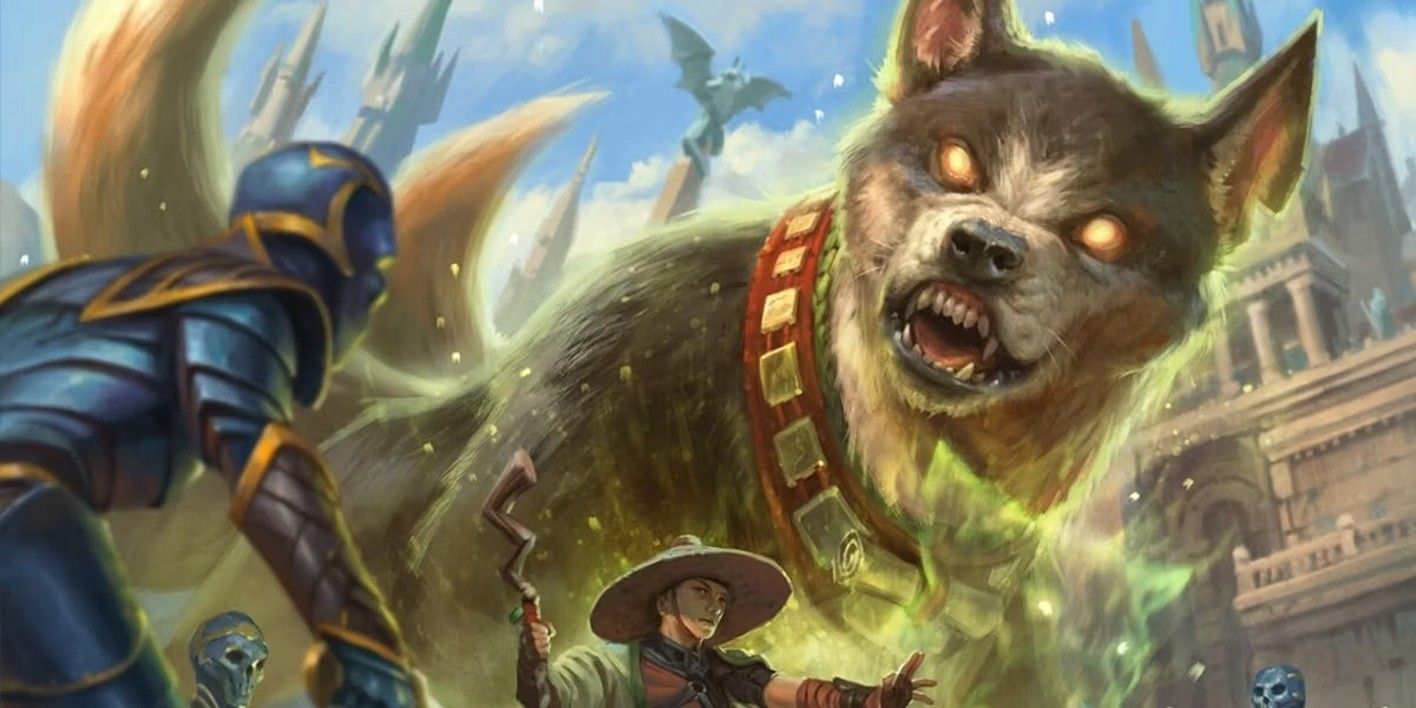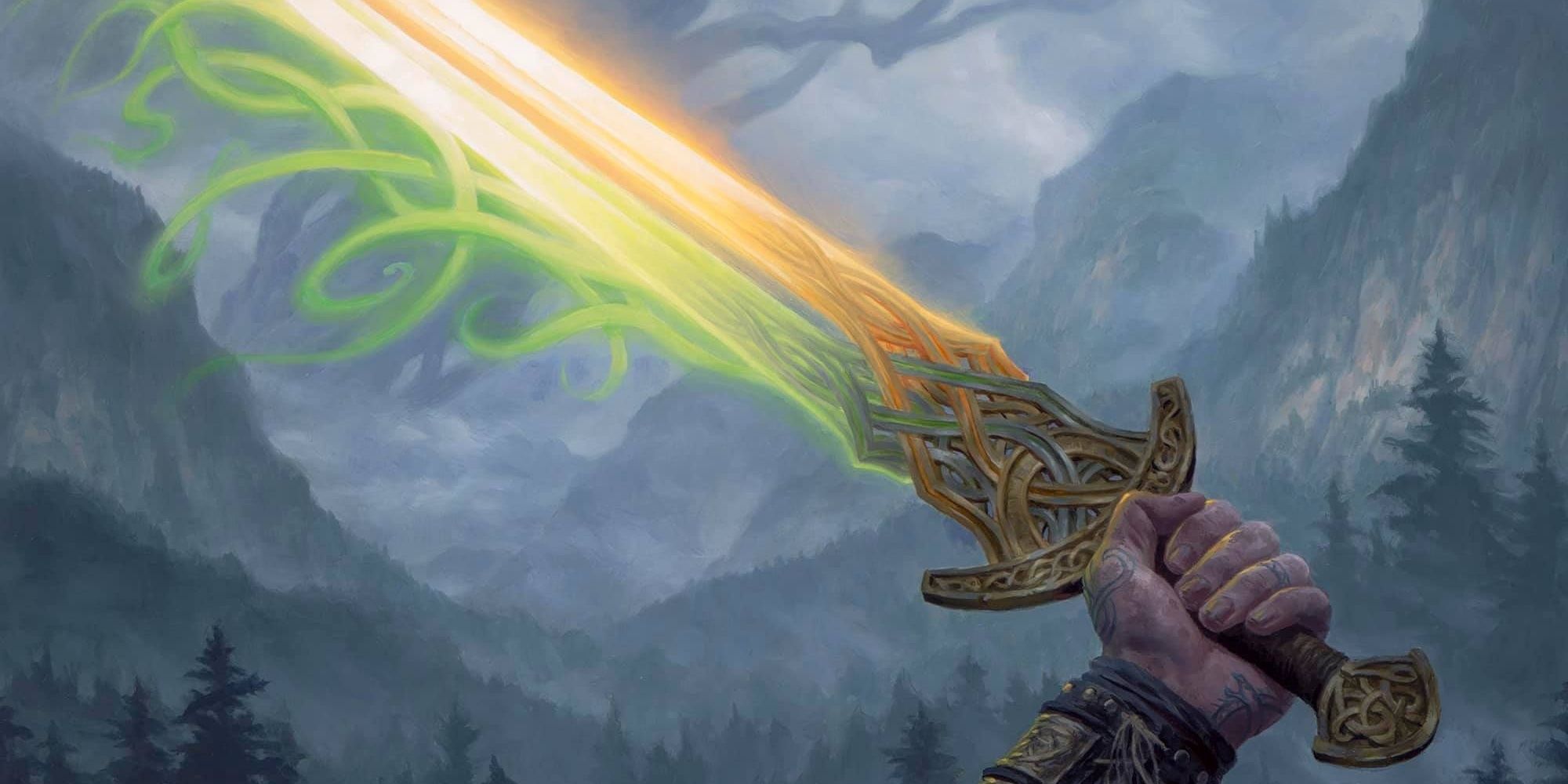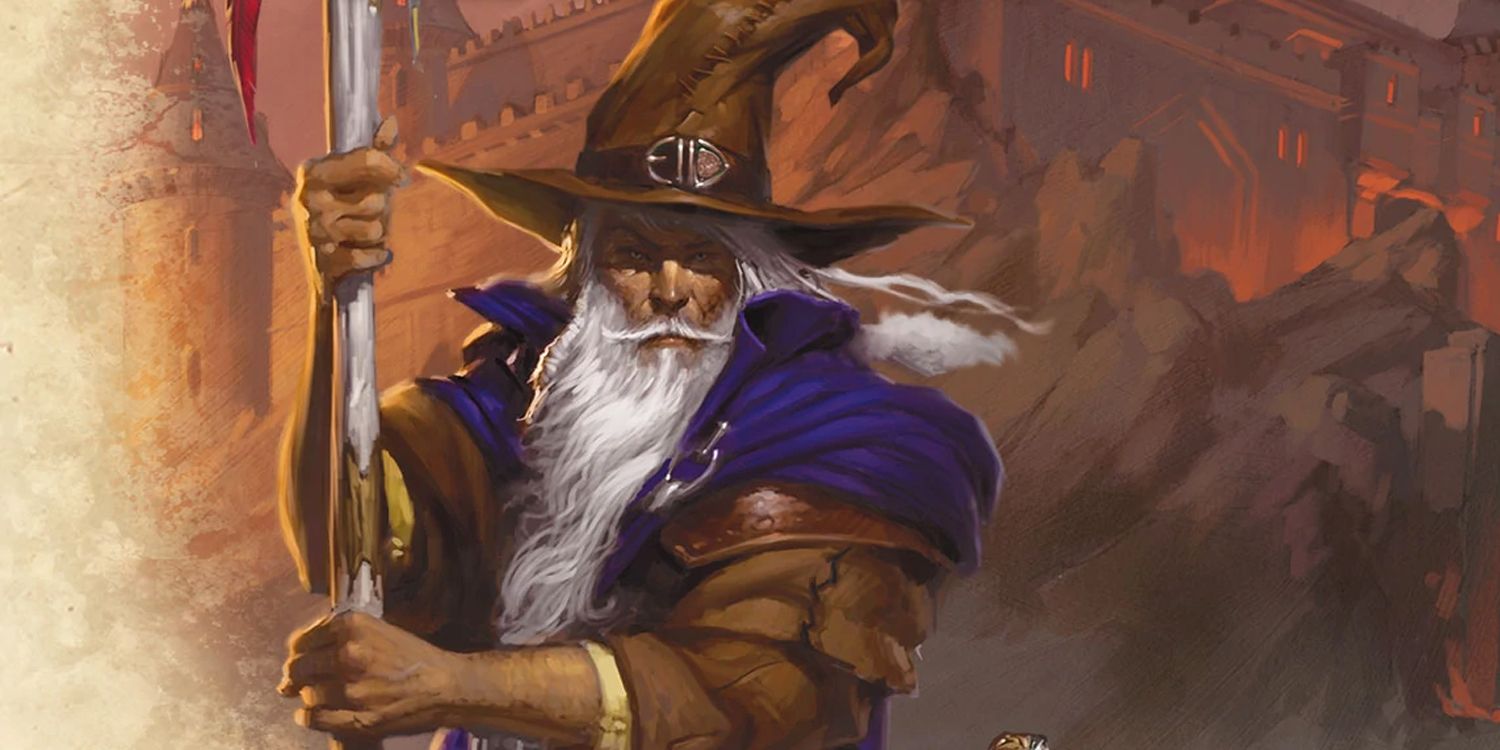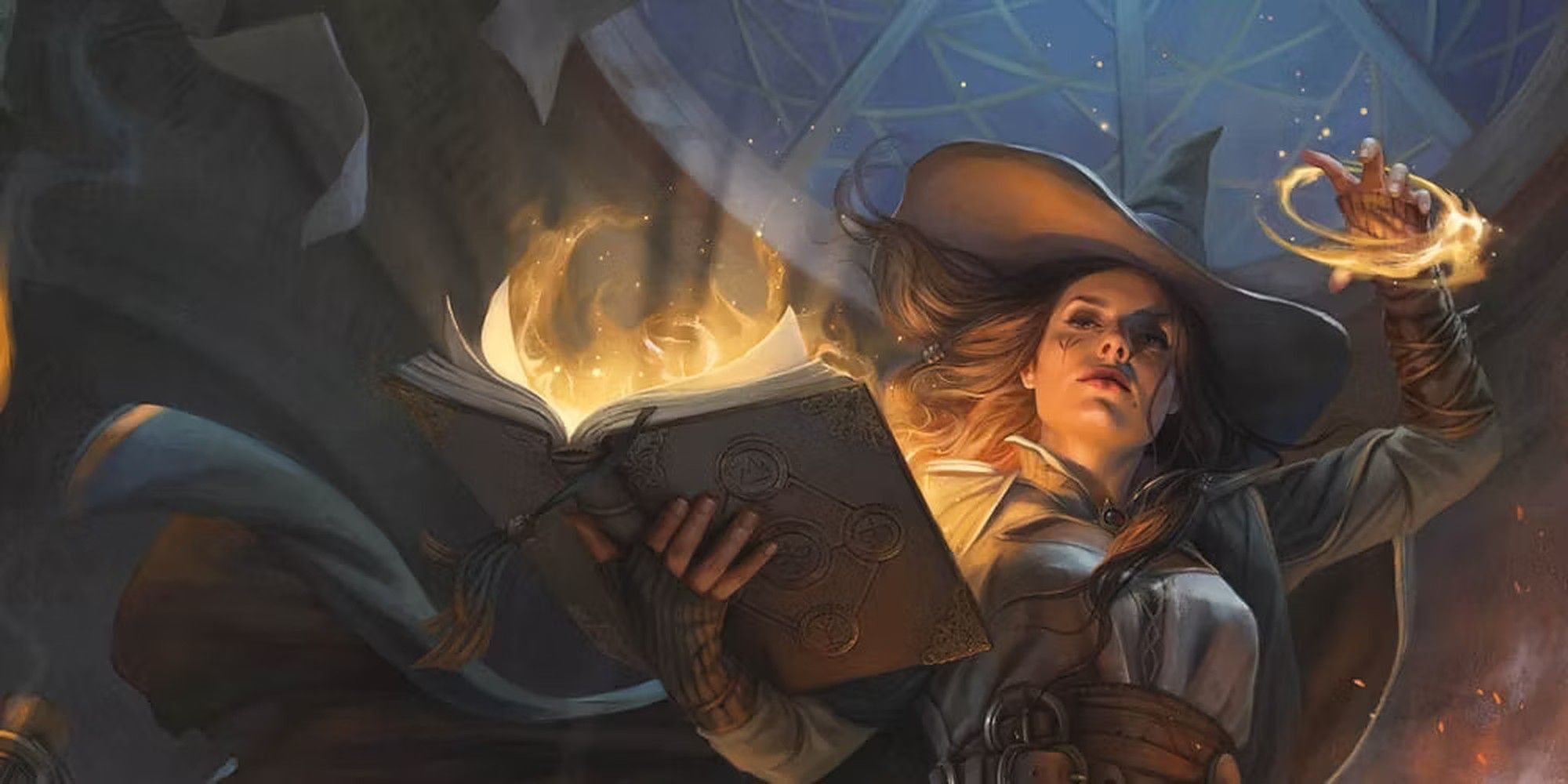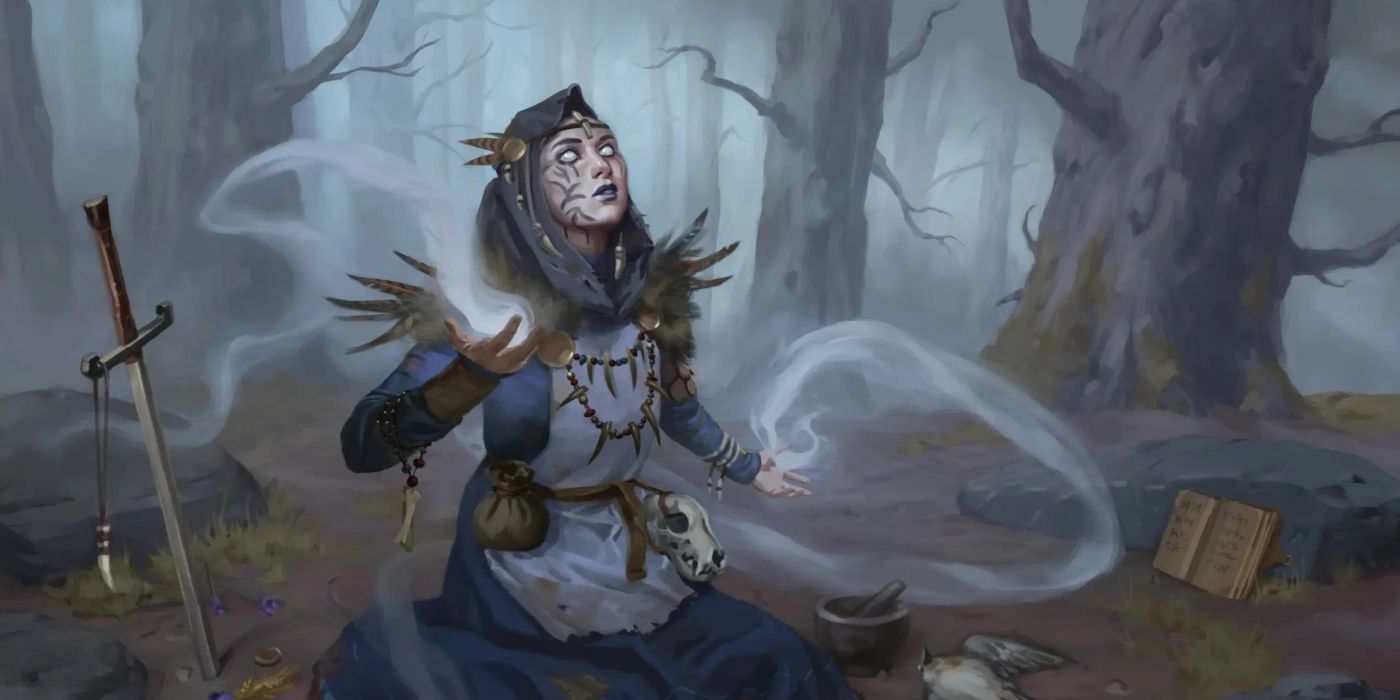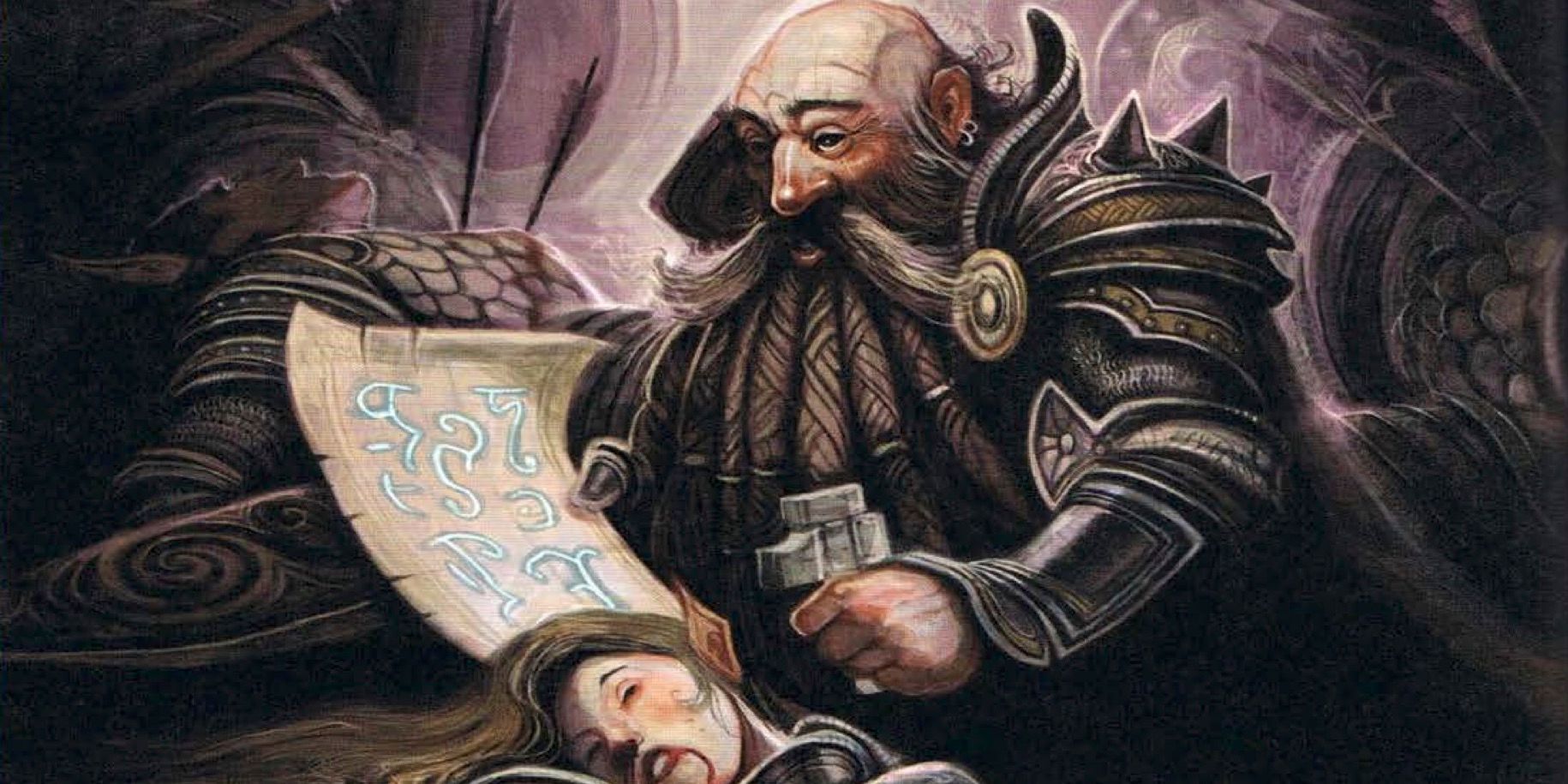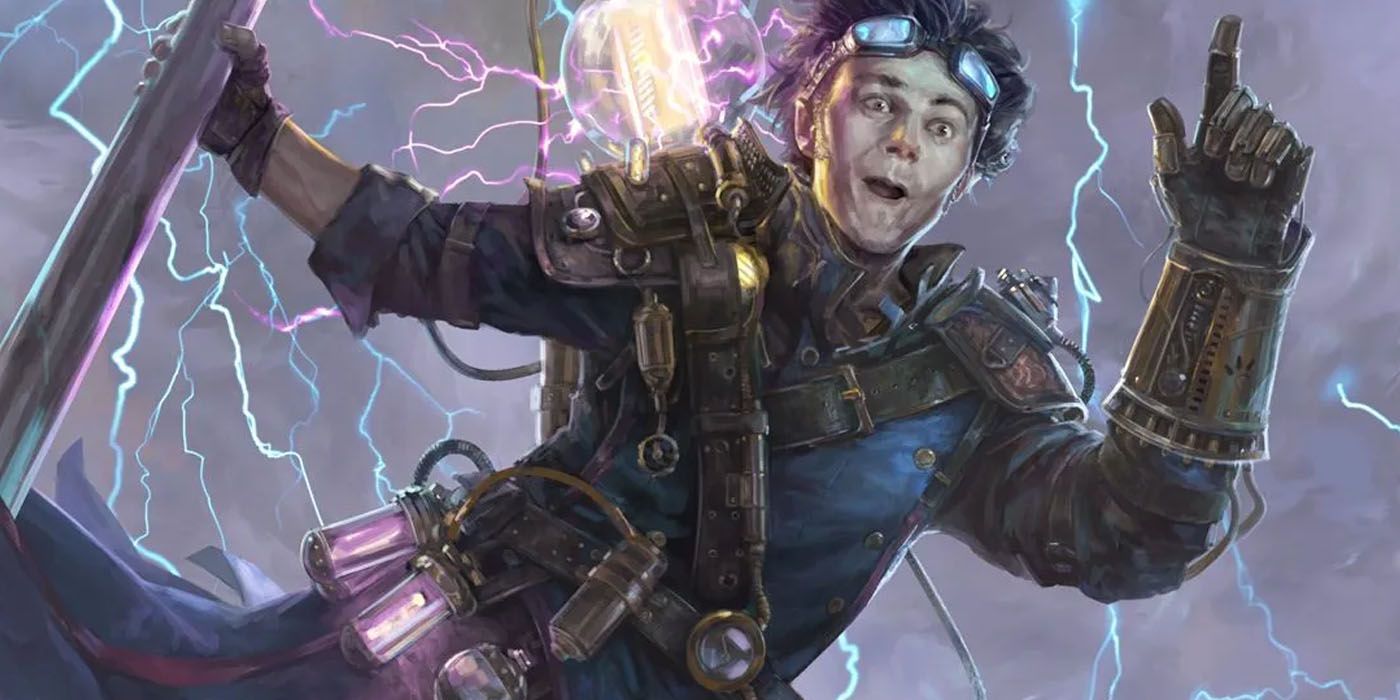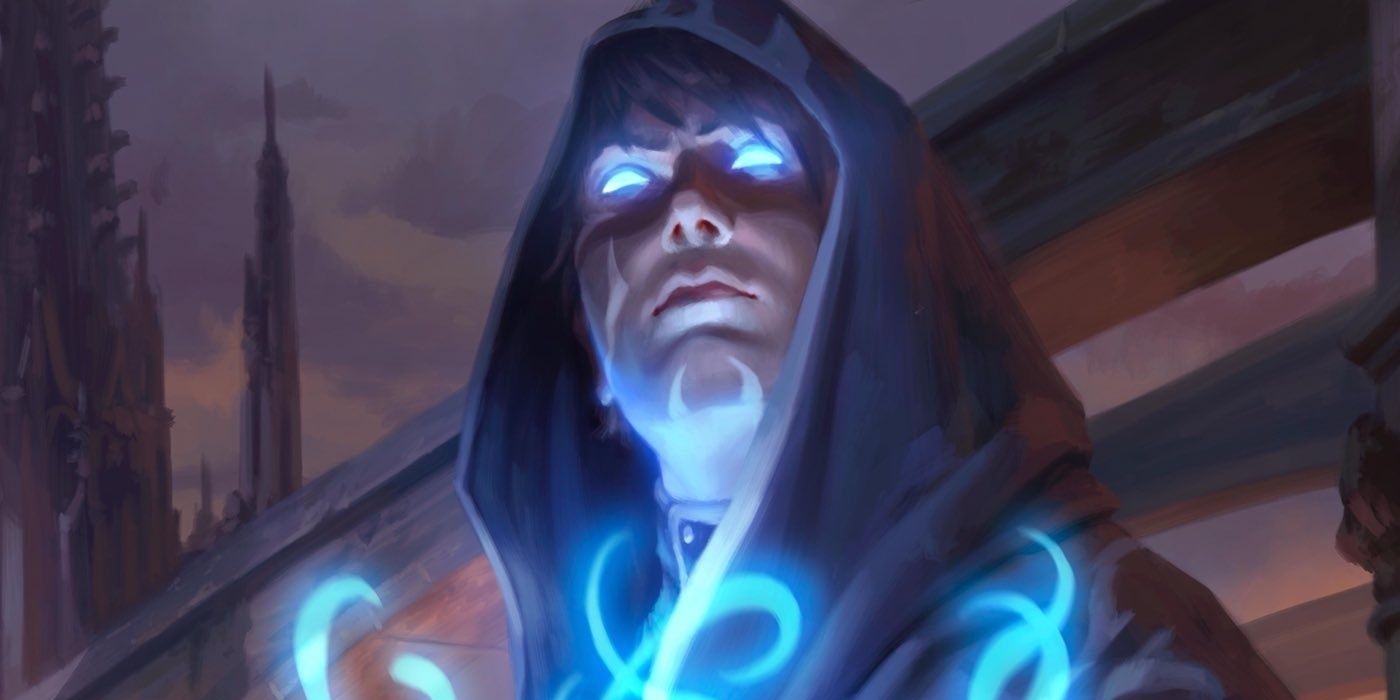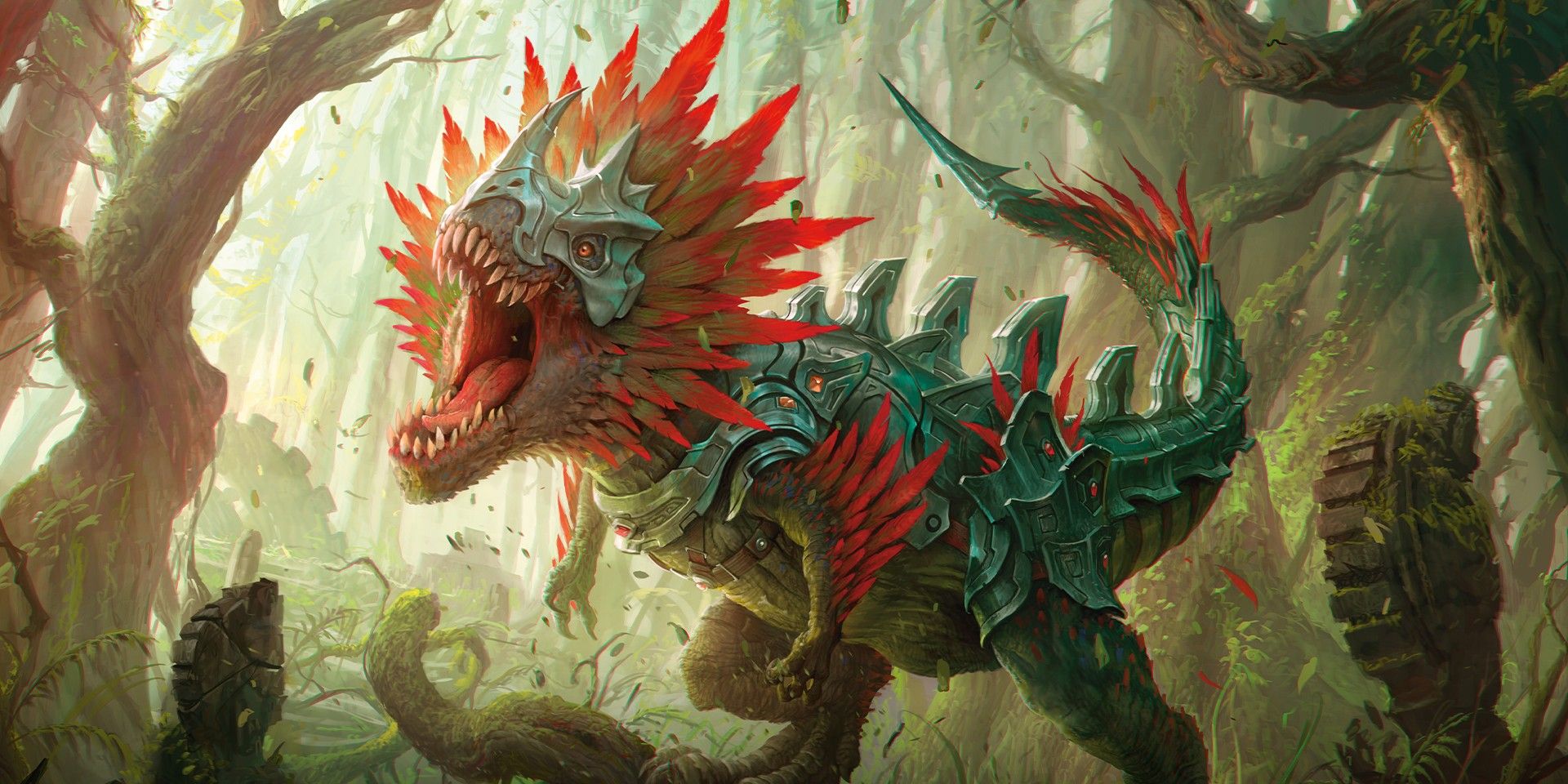Magic in Dungeons & Dragons Fifth Edition can be so much more than just blowing people up with a fireball, even in combat. Although D&D's many direct damage spells are very useful, more can be achieved through the use of buff spells. If a magic user helps other party members hurt enemies rather than hurting enemies themselves, they can deal far more damage.
There are plenty of buff spells in D&D 5e both in and out of combat. Most are good, but there are some that stand head-and-shoulders above the others as near-essentials for any caster who can take them. Whether they're versatile, low-level, or simply powerful, they are a massive force multiplier for the party.
Updated on April 17th, 2024 by Louis Kemner: This list has of the best buff spells been updated to fit CBR's current formatting guidelines. It takes more than offensive spells like Eldritch Blast and Fireball to win a fight against D&D's toughest boss monsters or survive brutal traps. Buff spells are the key to helping the spellcaster's allies roll better on offense and defense, gain more hit points, or avoid getting hit by enemy attacks at all. The best buff spells are all excellent investments for a character's spell slot and embody the spirit of cooperation in Dungeons & Dragons.
15 Shield Of Faith Is Simple But Invaluable
|
School |
Abjuration |
|---|---|
|
Level |
1 |
|
Class |
Cleric, Paladin |
On the surface, Shield of Faith is not a particularly glamorous spell. It lets a D&D 5e paladin or cleric give a creature a +2 bonus to Armor Class. However, this is more powerful than its simple effect would indicate. D&D 5e's flat math makes small Armor Class bonuses valuable throughout the game. Shield of Faith will always make attacks 10% less likely to hit.
Shield of Faith has other virtues as a D&D 5e buff spell. A character can cast it many times without much cost due to it being first-level. In addition, it only requires a bonus action to cast. A character can use Shield of Faith on themselves or an ally and still make a weapon attack or cast a cantrip with their turn. Shielf of Fate isn't bottom of the list for any significant weaknesses in its own right, but simply because the best buff spells in D&D 5e happen to be even better.
14 Enlarge/Reduce Carries Surprising Utility For Its Low Cost
|
School |
Transmutation |
|---|---|
|
Level |
2 |
|
Class |
Artificer, Bard, Druid, Sorcerer, Wizard |
Enlarge/Reduce comes in two forms. Most of the time, Reduce is a debuff, while Enlarge is a more conventional buff. Even at its most straightforward, Enlarge/Reduce lets an ally take up more space on the battlefield and deal an extra 1d4 damage with each weapon attack. However, it has some more niche benefits.
Reducing a creature makes them far more able to sneak around or take cover, especially if they're already a small race like Halfling or Gnome. Enlarging a creature makes them a very effective grappler with advantage on Strength checks and the freedom to grapple Huge creatures. It also lets them wield Large weapons, typically accessible only to enemies, without disadvantage.
13 Holy Weapon Is A Damage Powerhouse
|
School |
Evocation |
|---|---|
|
Level |
5 |
|
Class |
Cleric, Paladin |
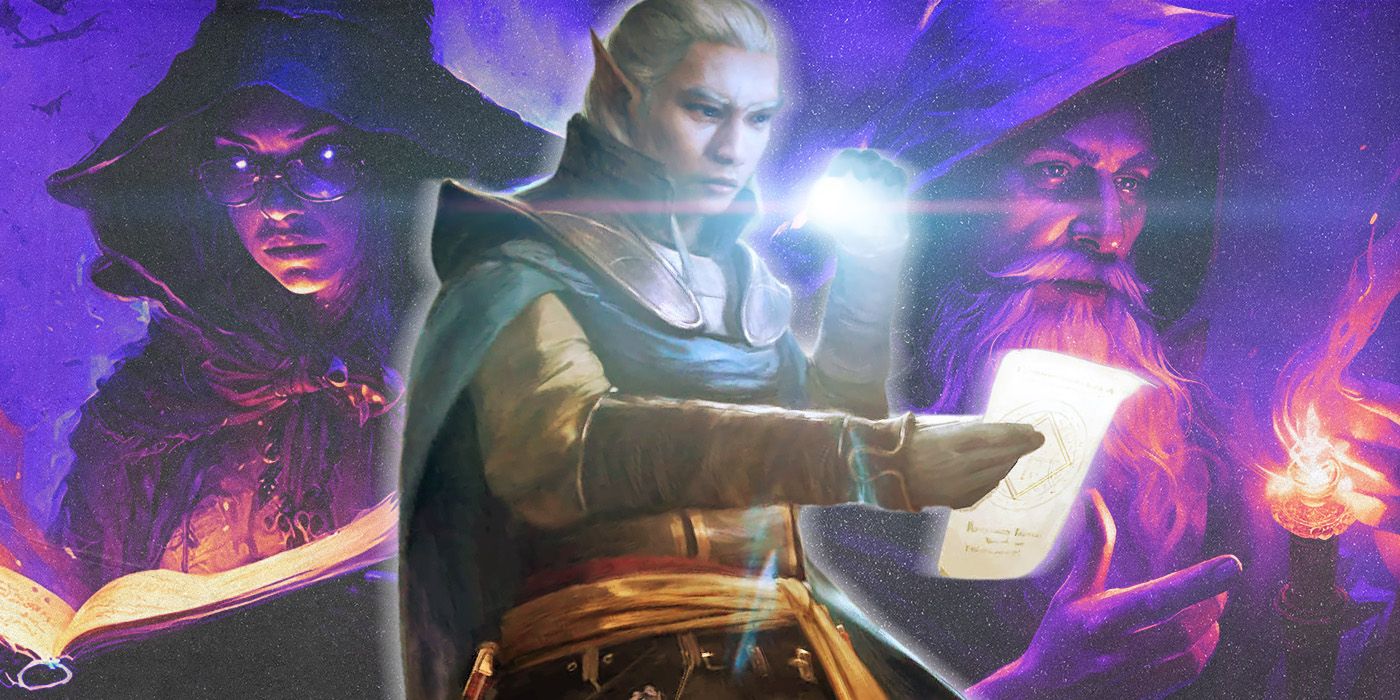
D&D: How Your Spellcasters Can Manage Their Spell Slots in Any Campaign
Spellcasters like wizards and sorcerers can use resourceful tricks and strategies to make sure they've always got a spell slot when they need one.Bonus damage is always a welcome buff in D&D 5e. Making each attack hit harder is a straightforward way to improve the capabilities of a party member. Even meager damage can build up over many strikes. Holy Weapon is anything but meager, letting an ally deal an additional 2d8 damage with every weapon attack they can make.
This is equivalent to a D&D 5e paladin using Divine Smite or various Smite spells on every weapon attack they make, without burning through that many spell slots. Holy Weapon also enables a rarely-resisted damage type, ensuring few enemies can shrug it off. In dire circumstances, a spellcaster can even end the buff to blind nearby enemies. Holy Weapon's high spell slot cost is its only drawback as a powerful buff spell in D&D 5e.
12 Tenser's Transformation Turns A Caster Into A Powerhouse
|
School |
Transmutation |
|---|---|
|
Level |
6 |
|
Class |
Wizard |
For the most part, buff spells have limited effects and are often better suited to characters other than the caster. Tenser's Transformation does away with these rules. The spell lives up to its name by completely overhauling a D&D 5e wizard's playstyle and turning them into a warrior for its duration.
With a sixth-level spell slot, Tenser's Transformation lets a wizard wield any weapon or armor and make two attacks with an action, gives them 50 temporary hit points, and makes their weapon attacks deal a staggering 2d12 extra damage – among other benefits. There are many drawbacks to balance this, however. These include the risk of Exhaustion when it ends and an inability to cast spells for its duration. As a result, Tenser's Transformation has higher costs than other top-tier buff spells in D&D 5e.
11 Death Ward Staves Off Death With 1 HP
|
School |
Abjuration |
|---|---|
|
Level |
4 |
|
Class |
Cleric, Paladin |
Death Ward is a D&D 5e buff spell that saves party members from a worst-case scenario rather than making them more effective. The first time a character with Death Ward falls to 0 hit points, they don't fall unconscious. Instead, they drop to a single hit point. In D&D 5e, this is enough to keep a character in full fighting shape.
Death Ward prevents characters from dropping out of the fight or dying in one turn from high-damage spells or flurries of melee attacks. In addition, it lets allies fight more freely without fearing for their hit points. Death Ward's best trait as a D&D 5e buff spell is that it doesn't require Concentration. A character can cast it on as many allies as they like and still run a more conventional buff in combat. Nonetheless, it's lower than many other options for its limited impact outside near-death situations.
10 Enhance Ability Is Invaluable Outside Of Combat
|
School |
Transmutation |
|---|---|
|
Level |
2 |
|
Class |
Artificer, Bard, Cleric, Druid, Ranger, Sorcerer, Wizard |

10 Best Spells On Critical Role (& What They Used Them For)
From teleportation spells like Dimension Door to resurrection spells like Revivify, Critical Role employs many powerful D&D spells to various effects.Most buff spells in D&D 5e are best used in combat, making creatures better able to deal damage or survive their foes. Enhance Ability, by contrast, is best used in the other parts of the game. Its base effect is simple. When a character casts Enhance Ability on a creature, they choose an ability score. That creature gets advantage to that ability check for the next hour.
Enhance Ability isn't one of D&D 5e's most exciting buff spells, but it is one of the most dependable. It prevents one poor roll from ruining the party's plans or makes one last desperate attempt far more likely to succeed. The fact that Enhance Ability can give other boons, like temporary hit points or mitigating some fall damage, makes it even better. Still, it ranks a bit modestly among D&D's best buff spells since its effects can be narrow compared to spells like Bless or Polymorph.
9 Haste's Power Is Matched Only By Its Drawbacks
|
School |
Transmutation |
|---|---|
|
Level |
3 |
|
Class |
Artificer, Sorcerer, Wizard |
Haste is unquestionably the most effective third-level spell in D&D 5e. For one spell slot, Haste doubles a creature's speed, buffs their AC, grants advantage on Dexterity saving throws, and grants an additional action that can be used for attacking, running, hiding, disengaging, or using objects. Such a buff is great for any friendly target, but ideally, it will be used on the martial classes so they can hit that much harder and quickly run toward their targets.
D&D 5e's Haste spell gives a dazzling boost to offense, defense, and utility. However, to balance this, it has a notable drawback. As with most buff spells, it requires Concentration. Furthermore, the Hasted creature cannot move or take actions the turn after it ends, leaving them helpless. Haste is a high-risk, high-reward D&D 5e buff spell that can turn the tide in any encounter. These drawbacks keep it lower on the totem pole than other support spells, but Haste's value shouldn't be underestimated.
8 Aid Is A Low-Key, Practical Boon To Survivability
|
School |
Abjuration |
|---|---|
|
Level |
2 |
|
Class |
Artificer, Bard, Cleric, Paladin, Ranger |
Some of D&D 5e's best buff spells make allies better at attacking or give them exciting new abilities. Aid is a much simpler spell with a much less flashy effect, but it is no less powerful for it. For the low cost of a second-level spell slot, Aid increases the hit points and maximum hit points of up to three creatures by five each, with this bonus increasing with higher-level spell slots.
It may not seem like much, but five hit points can easily be the difference between a creature falling unconscious to an attack or staying up and being able to fight back on their next turn. Aid's real value comes from its lack of Concentration – meaning it can be cast alongside any other spells the caster may like. The minor downside is that this buff spell is redundant if the party has a Charisma-heavy character with the Inspiring Leader feat.
7 Greater Invisibility Is A Short-Term Power Boost
|
School |
Illusion |
|---|---|
|
Level |
4 |
|
Class |
Bard, Sorcerer, Wizard |
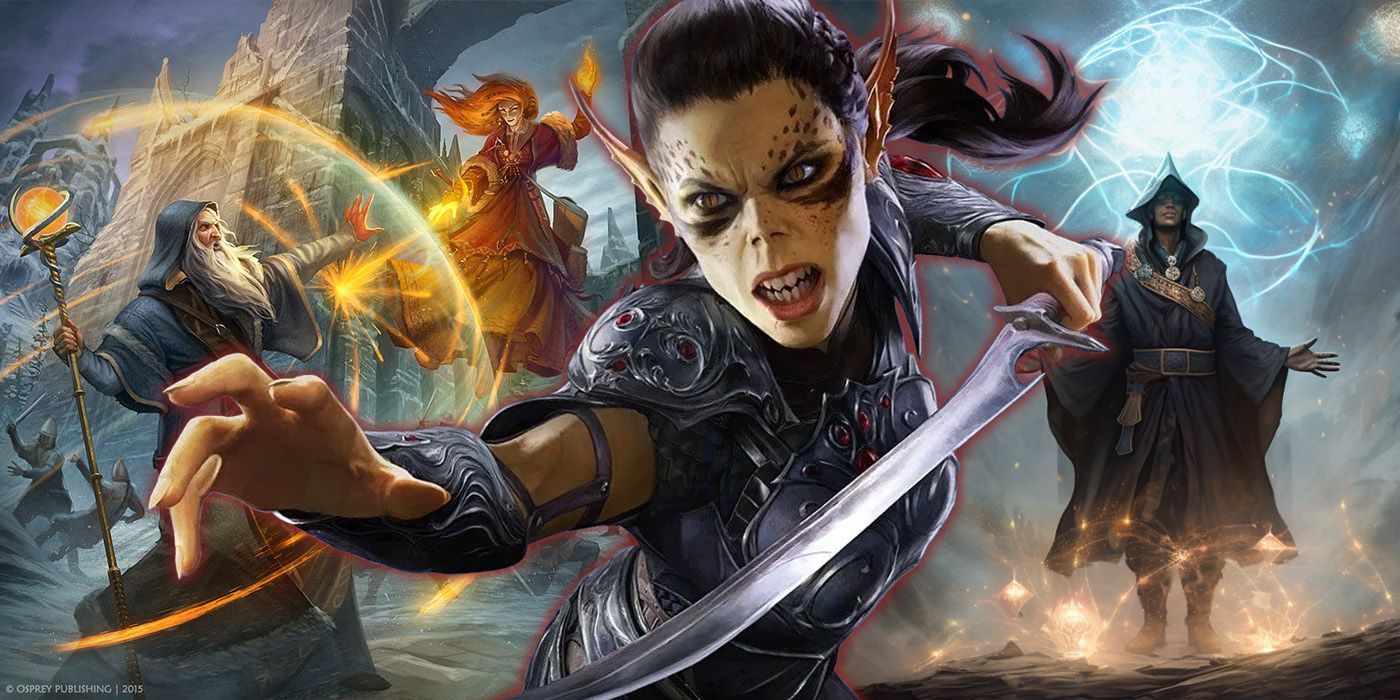
10 D&D 5e Spells Sorely Missing From Baldur's Gate 3
Baldur's Gate 3 lets players live out their dungeon-crawling fantasies, but there are great D&D spells surprisingly absent from the new game.Invisibility is a powerful effect in D&D 5e. Alongside its obvious stealth boosts, Invisibility makes a creature far harder to hit and better able to strike their opponents. Due to most spells requiring a caster to see the target, invisibility effects make a creature immune to a surprising amount of magic. Spells like True Seeing will reveal the invisible person, but that's not a common obstacle for Invisibility's caster to face.
The drawback of the second-level spell Invisibility is that the invisible creature cannot attack or cast a spell without revealing themselves. Greater Invisibility, a fourth-level D&D 5e buff spell, removes this limitation. As such, a creature with Greater Invisibility is a vastly more effective combatant. However, Greater Invisibility lasts only a minute compared to the lesser version's hour. This drawback makes it a combat buff and nothing more, but a very effective one.
6 Pass Without Trace Is Unbeatable For Stealth
|
School |
Abjuration |
|---|---|
|
Level |
2 |
|
Class |
Druid, Ranger |
Stealth can be the bane of many D&D 5e parties. Most are likely to contain at least one member who is clumsy, heavily armored, or both. Sneaking is risky and can be blown with a couple of bad rolls. The second-level spell Pass Without Trace takes a huge amount of danger out of using stealth. Even if Stealth is one of the game's best skill proficiencies for rogues, Pass Without Trace may still be needed if the party absolutely cannot afford to reveal their presence to the enemy.
Aside from hiding the party's tracks, Pass Without Trace provides a +10 bonus to the Stealth checks of anybody close to the caster. Direct number buffs are rare in D&D 5e, especially ones as high as +10. It's almost impossible for a party to fail their stealth checks under Pass Without Trace in D&D 5e, even if it has no in-combat benefits.
5 Bless Is Beneficial For Most Of The Party
|
School |
Enchantment |
|---|---|
|
Level |
1 |
|
Class |
Cleric, Paladin |
With the way D&D 5e is designed, even minor improvements to rolls can have significant effects. This design philosophy ensures a first-level D&D 5e buff spell like Bless stays powerful throughout the game. Bless grants an additional d4 to both attack rolls and saving throws for a minute. This is a small but consistent buff to attack and defense that can tip a fight.
One of the best parts of Bless is that it affects multiple creatures. A first-level spell slot targets three creatures, with an additional target for every level higher, so Bless scales up fairly well until it can affect the entire party and perhaps a few friendly NPCs all at the same time. It's a cheap way to give the best D&D 5e combat characters an accuracy buff similar to the very best magic weapons, with a saving throw bonus added for good measure. Bless remains one of D&D 5e's best buff spells throughout an entire campaign, all for the low cost of a first-level spell slot. Only four spells are even more effective than Bless, pound for pound.
4 Guidance Can Be Cast Endlessly
|
School |
Divination |
|---|---|
|
Level |
Cantrip |
|
Class |
Artificer, Cleric, Druid |
On the surface, Guidance seems a relatively humble buff. It simply gives a d4 to one ability check – rarely useful in combat – made in the next six seconds. This can seem underwhelming compared to more impressive support spells in D&D 5e, particularly those that require Concentration, but Guidance has several factors in its corner.
Guidance is a great D&D 5e cantrip and certainly doesn't cost a spell slot. As long as the party has a second to prepare, there is almost no reason to make an ability check without Guidance. Concentration is the only limitation that stops the entire party from being better at D&D 5e's core mechanic.
3 Foresight Is Suitably Powerful For 9th-Level
|
School |
Divination |
|---|---|
|
Level |
9 |
|
Class |
Bard, Druid, Warlock, Wizard |

10 Underrated D&D Spells
Since they're not as infamous or as praised as other D&D spells, Lightning Lure, Divine Favor, and more often get overlooked despite their perks.Foresight is one of D&D 5e's most all-encompassing buffs, fitting for a ninth-level spell. It gives a single creature advantage on all ability checks, attack rolls, and saving throws while also giving all creatures disadvantage to hit them. It has the minor benefit of making that creature impossible to surprise.
Foresight, as a D&D 5e buff spell, makes a creature better at anything they turn their mind to. It also makes them far more survivable in any combat situation. It's an easy spell to cast at the beginning of the day to make one character better. This likewise comes without Concentration. Nonetheless, Foresight's ninth-level spell slot is a suitably high cost some D&D 5e spellcasters may be reluctant to pay.
2 Polymorph Creates A Literal Combat Monster
|
School |
Transmutation |
|---|---|
|
Level |
4 |
|
Class |
Bard, Druid, Sorcerer, Wizard |
In D&D 5e, a monster's Challenge Rating indicates its capability to fight against an entire party of D&D 5e characters at that level. Any enemy of a given CR is much more dangerous than a character of the same level. The Polymorph buff spell in D&D 5e allows a caster to turn themselves or another creature into a beast creature of a CR equal to or lower than their level.
Polymorph is ideal in almost any situation in D&D 5e. It can provide utility buffs in the form of flight, swimming, or burrowing to party members who struggle in this regard. In combat, it provides a vast number of hit points and new combat abilities. Crucially, a creature can be reduced to 0 hit points in their new form and not suffer for it, simply transforming back into themselves to continue fighting. The great ape is a common form to use in combat via Polymorph, while birds may be ideal for outdoor scouting.
1 Shapechange Gives All The Abilities Of The Game's Most Powerful Creatures
|
School |
Transmutation |
|---|---|
|
Level |
9 |
|
Class |
Druid, Warlock, Wizard |
9th-level spells are the most powerful available to players in D&D 5e, and they typically live up to the power players would expect from such. Shapechange can seem like simply a more powerful version of the fourth-level spell Polymorph, and lesser than fellow ninth-level spell True Polymorph. However, it edges out far ahead of both in many ways.
Both Shapechange and True Polymorph let a character become any creature with a CR lower than their level. This includes iconic D&D 5e enemies like beholders and dragons. However, Shapechange also lets a creature keep their abilities such as spellcasting and skill proficiencies, giving them the best of both worlds. It scores the top spot on any list of the best D&D 5e buff spells for turning any character into something vastly more powerful than themselves with very few drawbacks.
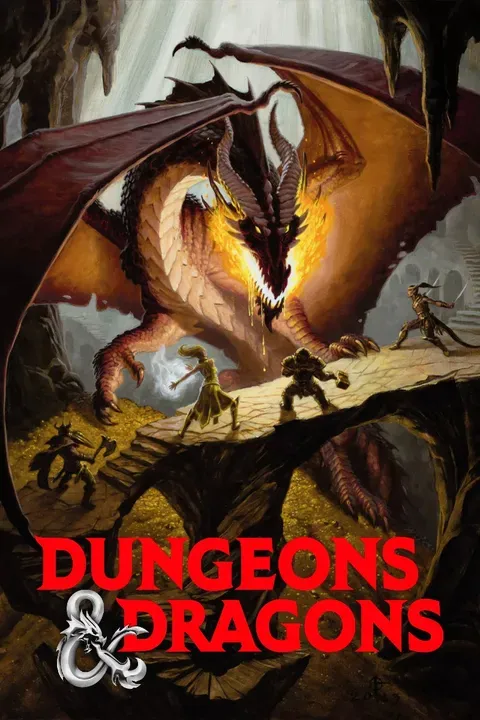
Dungeons and Dragons
A fantasy roleplaying tabletop game designed for adventure-seekers, the original incarnation of Dungeons & Dragons was created by Gary Gygax in 1974.
- Franchise
- Dungeons & Dragons
- Original Release Date
- January 26, 1974
- Publisher
- Wizards of the Coast , TSR Inc.
- Designer
- E. Gary Gygax , Dave Arneson
- Player Count
- 4-8 Players Recommended
- Age Recommendation
- 12+
- Length per Game
- 3 hours +
- Expansions
- Dungeons & Dragons 2nd Edition , Dungeons & Dragons 3rd Edition , Dungeons & Dragons 4th Edition , Dungeons & Dragons 5th Edition

